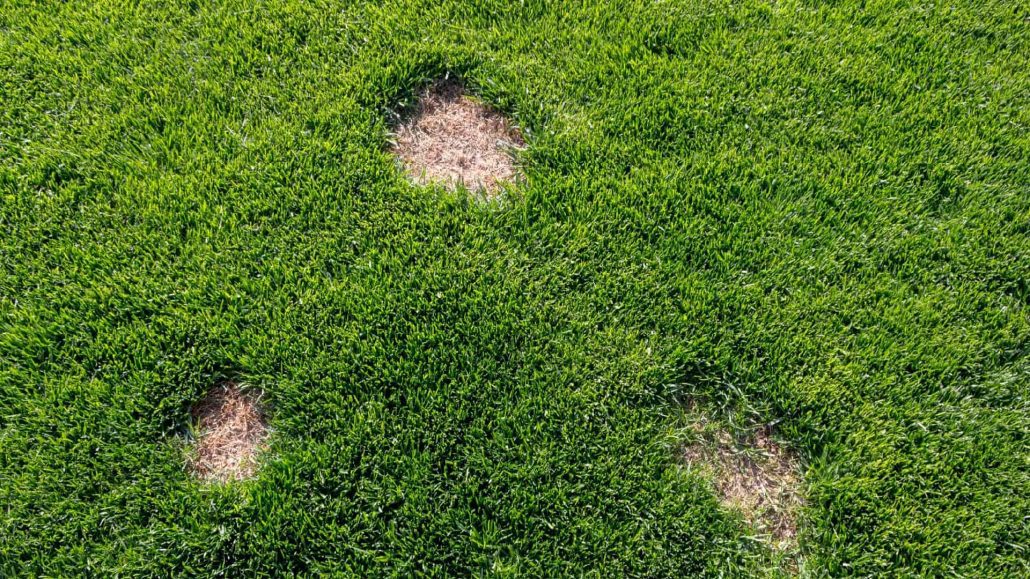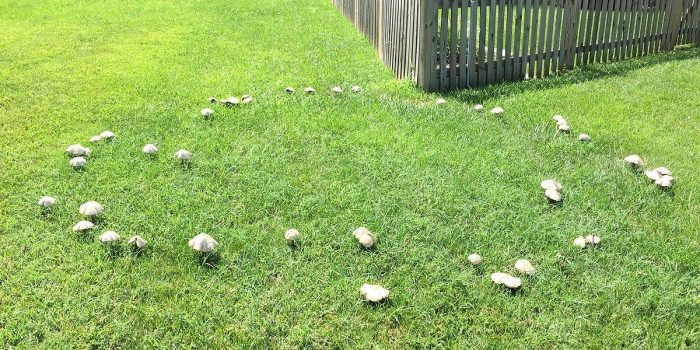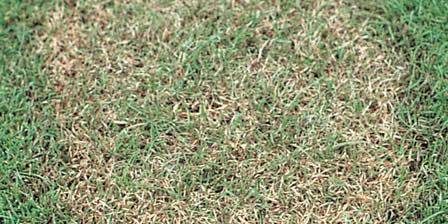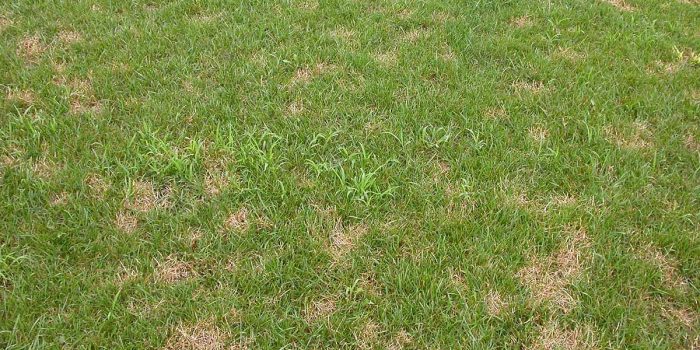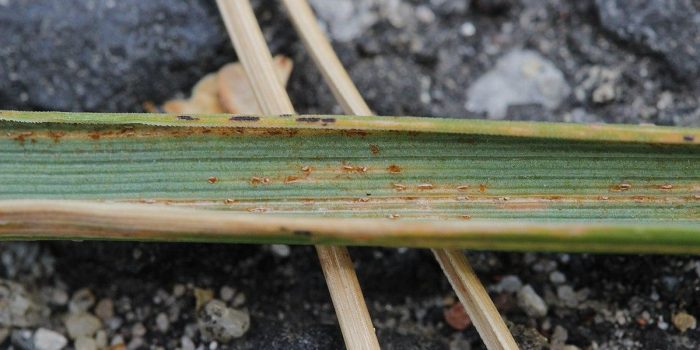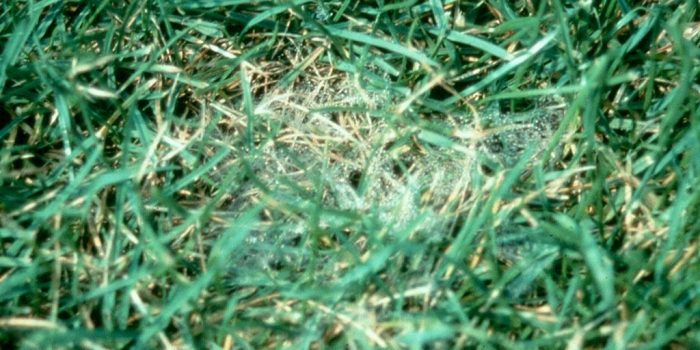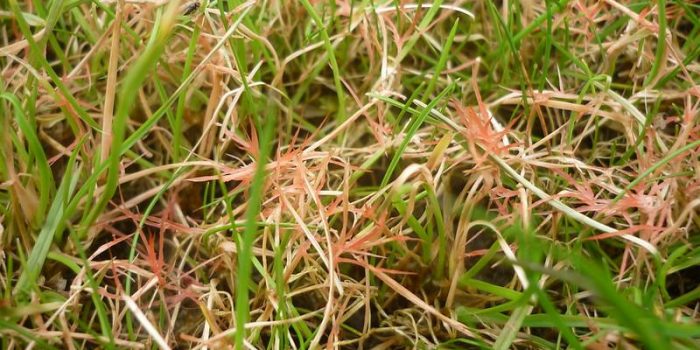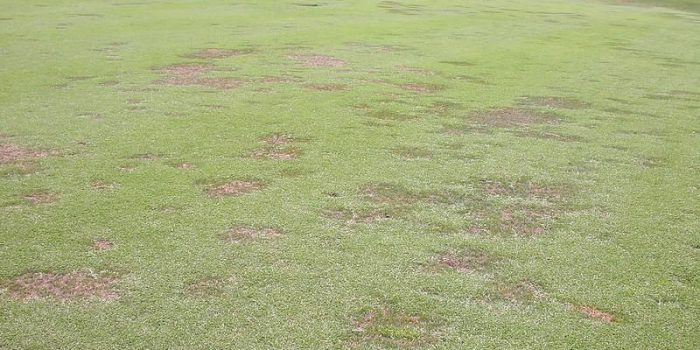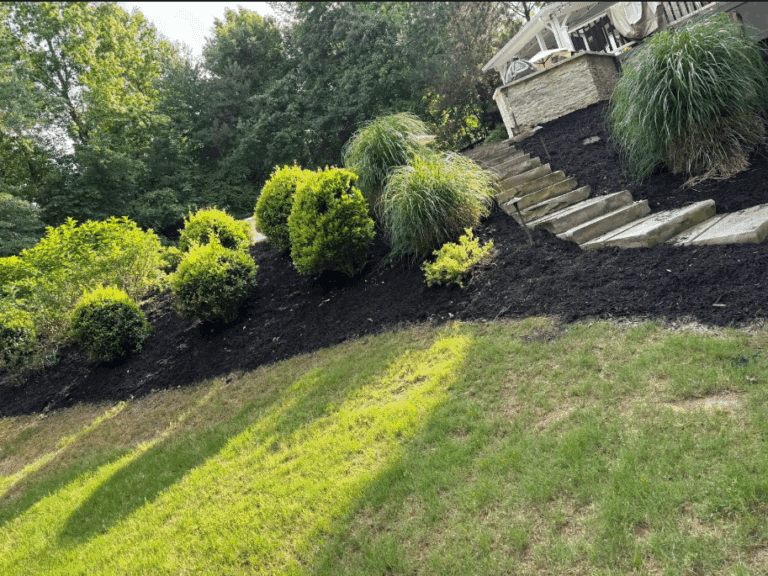Spring is here, and the upcoming rains and wet conditions mean yards across the area will be hit with fungal diseases. If you’re one of the unlucky, instead of the lush green landscaping you strive for, you’ll end up with brown patches that, if misidentified and mistreated, can be hard to thwart.
When it comes to owning a home, knowing whether your yard is being attacked by lawn fungus or if it’s suffering from another ailment can save you time and frustration, not to mention money. In this article, we’re discussing the types of lawn fungus and the signs you need to watch for, as well as how you can prevent lawn fungus and when you should contact a professional.
What is Lawn Fungus?
Naturally present in every yard, fungus spores typically play a beneficial role in your lawn. However, under stressful circumstances and where environmental conditions are favorable, such as excessive heat and humidity, these spores can proliferate excessively, leading to issues.
Water lingering on blades of grass for extended periods frequently leads to the development of fungus. The mycelium, which is the network of fungal threads, utilizes this water as a conduit to move across and between leaves. This process facilitates the spread of the fungus to various areas of the lawn, exacerbating the issue.
Causes of Lawn Fungus
Generally, all lawns have dormant fungi resting within grass soil. However, the right conditions can trigger the fungus to attack the lawn when you least expect it. Lawn fungus thrives in two types of conditions:
- Extremely moist conditions. If your lawn does not have a proper irrigation system, this creates extended periods of moisture unable to drain.
- High humidity and muggy areas.
- Tightly compact soil
- Too short lawn. Poor mowing practices at the wrong time can lead to the development of lawn fungus
- Improper application of fertilizers
Think about the natural causes of fungus or mold. Warm and moist areas tend to be breeding grounds for fungi allowing them to grow in closed spaces. Weaker lawns with poor maintenance and shaded are more susceptible to lawn diseases. Therefore, harboring a high risk of damage.
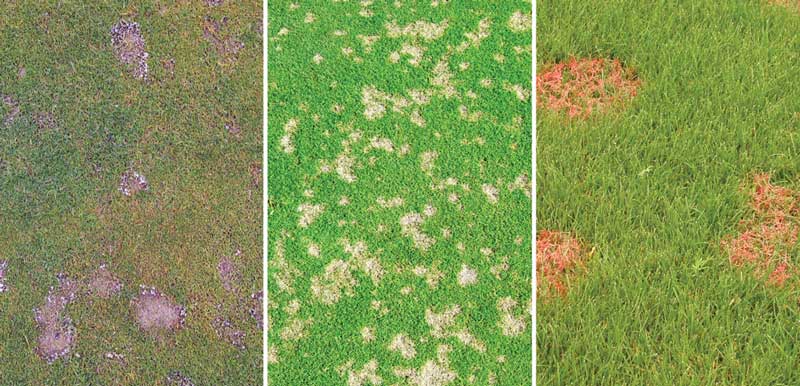
Signs of Disease in Your Lawn
To know whether or not your grass harnesses fungus, there are certain signs to look out for when examining its state. Knowing the signs can help prevent other diseases from attacking your lawn. Some of the signs include:
- Discoloration in the grass
- Mushroom growth
- Yellow or light green patches
- Fine or thin patches of grass blades
- Circular discolored spots
- Irregular spots of growth on
Common Types of Lawn Fungus
Depending on the fungi’s shape, size, and color, there are several types with differing qualities. Our blog Lawn Fungus Identification and Control focuses on the most common kinds of lawn diseases and to control the damage. The common types include:
- Fairy Ring
- Brown Patch
- Dollar Spot
- Rust
- Pythium Blight
- Red Thread
- Spring Dead Spot
- Fairy Ring
- Brown Patch
- Dollar Spot
- Rust
- Pythium Blight
- Red Thread
- Spring Dead Spot
How to Prevent Lawn Fungus
Aerate and Dethatch
This improved soil drainage of the lawn. This ensures excess moisture does not get trapped as well as the buildup of organic matter.
Scheduled Watering
Standard watering practices differ depending on the type of grass and the climate. Regardless, your lawn needs sufficient water for healthy growth. However, be sure to avoid overwatering causing your lawn to drown in excessive moisture.
Water the lawn in the morning to allow the soil to dry out before the next soil. Ultimately, preventing standing or trapped water.
Adjusting Mower Blade Height
Many believe cutting your grass extremely short is the best way to prepare your lawn for optimal growth. Adversely, this can cause stress on the grass blades by reducing the amount of accessible sunlight. The grass eventually becomes weak and more prone to lawn fungus. It is recommended to adjust the height of your mower blade specific to the type of grass.
Feed Your Lawn
Over-fertilizing or under-fertilizing your lawn can cause unhealthy soil. All turfgrasses require nitrogen to survive. By following a routine schedule, you’ll know the best time to apply and how much nutrients. Using a slow-release nitrogenous fertilizer during the growing season helps maintain a healthy and dense lawn.
Removing leaves, twigs, and other debris covering the grass improves ventilation. When the grass can breathe freely, there is less likelihood of breeding fungal diseases.
When to Contact a Professional
Some lawns suffering from lawn diseases can be managed especially if the case is mild. In other cases, lawn fungus could correct itself without any maintenance. However, some lawns may require professional help because of the size of the growth and lack of resources.
Suppose you notice any concerning changes in your lawn’s appearance or are unsure about how to properly identify and treat a potential disease. If so, it’s best to contact a professional lawn care company for better assistance.
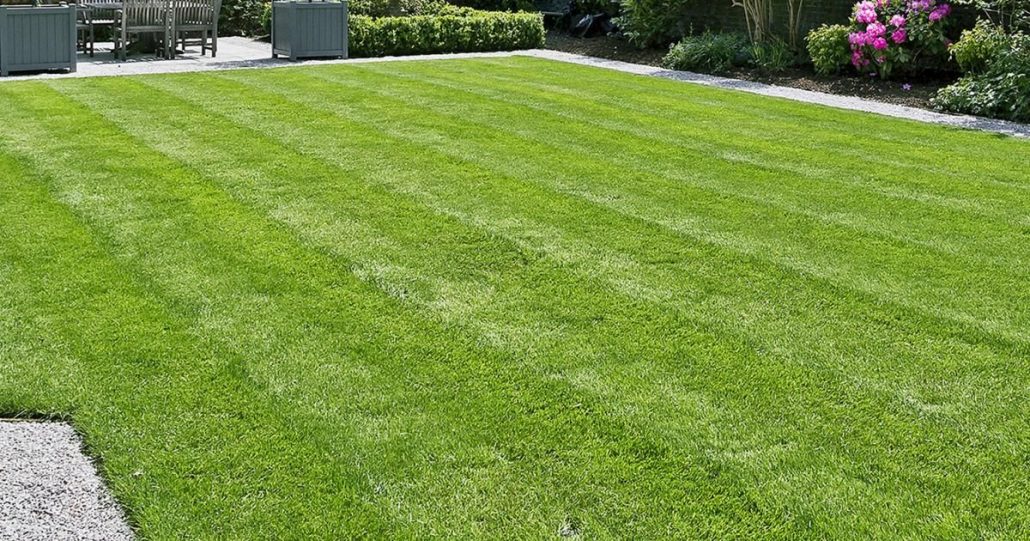
Final Thoughts
At Creech Landscape, we have the expertise and resources to accurately diagnose and treat any lawn disease. Our goal is to help you to maintain a healthy and vibrant lawn. Remember, preventative care is the best way to prepare for recurring issues.
Your lawn will thank you! Be sure to implement proper maintenance practices and promptly access signs of fungal growth. With the right care and attention, your lawn is prepared!


